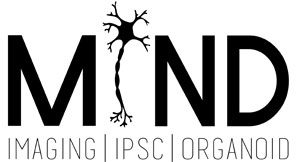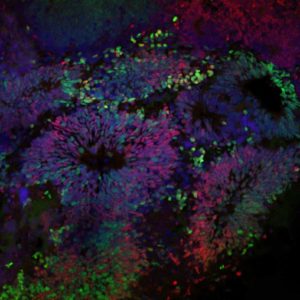The use and generation of induced pluripotent stem cell (IPSC)-generated cells or tissues has increased exponentially. The possibility of generating patient-derived IPSC lines followed by differentiation into desired cell types or tissues provides new and ground-breaking insights into disease mechanisms and can facilitate the development of therapeutic approaches. We use IPSC approaches to generate neurons, (micro)glial cells and non-neural cells for different translational projects. For example, motor neurons and muscle cells for research into ALS. Differentiated cultures generated from (gene mutation corrected) control and patient IPSCs are subjected to numerous analyses, including electrophysiology (patch clamp), calcium imaging, immunocytochemistry and (single cell) RNAseq. In addition to isolated neuronal or glial cultures, organ-on-a-chip technology is used to reconstruct neural circuits, for example the neuromuscular junction.
Furthermore, genome editing approaches, such as CRISPR/CAS9, are used to generate isogenic controls or cell lines carrying specific mutations. IPSCs are also used to generate various types of brain organoids allowing analysis of neuronal and glial cell morphology and function in a three-dimensional environment, for example for studying ALS and Alzheimer’s disease. Analysis of neuronal morphology is facilitated by Ultramicroscope lightsheet imaging present in our lab. Our human in vitro modelling studies are supported by different funding agencies including Stichting ALS Nederland, Health Holland, Horizon Europe (YouthGEMS) and others.

The IPSC, organoid and light-sheet imaging is organized in a research facility, the MIND facility. This facility is financially supported by the UMC Utrecht Brain Center, UMC Utrecht and Utrecht University, and managed by the Pasterkamplab.





